Forsgate Country Club
Monroe Township, New Jersey
United States of America

A 20,000 square foot Biarritz brings a smile to every Macdonald/Raynor/Banks devotee, especially when the hole is located in a four foot deep swale!
Most commonly Scottish immigrants helped translate the game to North America as golf professionals and in that role imparted the essence of the game and how it was played. Some were proficient at club making, others taught, and a few became household names in course design. Forsgate Country Club acts as a reminder that there were other ways, though surely the smallest subset was that as a founder and owner of a golf club.
John Forster’s emigration is common only at the start. He left his native Scotland for perceived better economic opportunities in the United States. His savings went toward the ship passage and he arrived ready to work, eventually getting into insurance. Together with Frederick Crum, he founded the insurance agency Crum & Forster in 1896. Their business thrived and Forster went on to become very wealthy and, according to club records, sought to build ‘… a self-sufficient community for his employees. In 1913, he eyed 50 acres of land in Monroe Township. When the farm was complete, Forster dubbed it Forsgate, honoring his own and his wife’s family name, Gatenby. After trial and error, the dairy project proved to be the most successful of his business ventures. In 1921 the Cranbury Press reported that Forsgate Farms had broken a World’s Record for producing the most amount of milk in sixty days.’
Undeterred by the Great Depression, the Scot decided to add a golf course in 1930. No record exists as to what other architects he may have spoken with but we know he selected Charles Banks. As someone who wanted the finest design tenets incorporated onto his New Jersey landscape, he couldn’t have made a wiser selection. Banks was the man carrying on the tradition established by C.B. Macdonald and furthered by his protégé, Seth Raynor, of interpreting the most noble, time-honored holes in the United Kingdom.
How had Banks, a former English teacher at Hotchkiss Preparatory School, come into golf course design? To quote our own legend, George Bahto, from his 1993 book The Legend of The Knoll Raynor: ‘Banks was a member of the school’s building committee which hired Raynor in 1924 to build a first rate golf course for Hotchkiss, a nine hole course featuring two sets of tees. Banks worked closely with Raynor and, as he watched him work, reversing the original routing of the course and adding eight new tees and greens, he became fascinated with course design and construction. Soon he left the school and joined Raynor’s firm. He quickly became a partner and they collaborated on the construction of many outstanding courses.’
To amplify Bahto’s statement, Banks assisted Macdonald and Raynor to build Mid Ocean in Bermuda and then worked with Raynor on some of his most distinguished designs including Yale and Yeamans Hall. When Raynor passed away in 1926 at the woefully young age of 47, Banks inherited a thriving enterprise. Coast to coast, ten projects including Yeamans Hall in South Carolina and Monterey Peninsula in California were in the works. By the time it came to build Forsgate in 1930, Banks had cemented a fine reputation of his own.
Tragically, Banks career was abruptly terminated an early age when both John Forster and he passed away the year Forsgate opened in 1931. While Raynor has finally received his due (largely thanks to Bahto’s work), the same can’t be said for Banks. His stint without Raynor was brief (1926 – 1931) and was complicated by the Great Depression. Forsgate is a rare exception of a quality design that emerged between October ’29 and October ’31.
During economic slowdowns clients that persevere and move forward are often huge beneficiaries of more of the architect’s time than they might in busier times. Such is the case here and Banks’s boldness permeates the grounds at Forsgate. Whippoorwill in Armonk, New York and Forsgate are the shining stars that Banks created on his own. Tastes in architecture have moved back toward the Macdonald, Raynor, Banks school of architecture and some of the most heralded recent designs like Chambers Bay feature width, deep bunkers and heavily-contoured and severely canted greens.
‘Big’ designs that lack strategic interest or unimaginative greens are little more than a bomber’s paradise. Banks saw to it that his courses were much more. Look no further than the start of the second nine to gain an appreciation of how Banks created large targets that reward creative shotmaking and finesse.
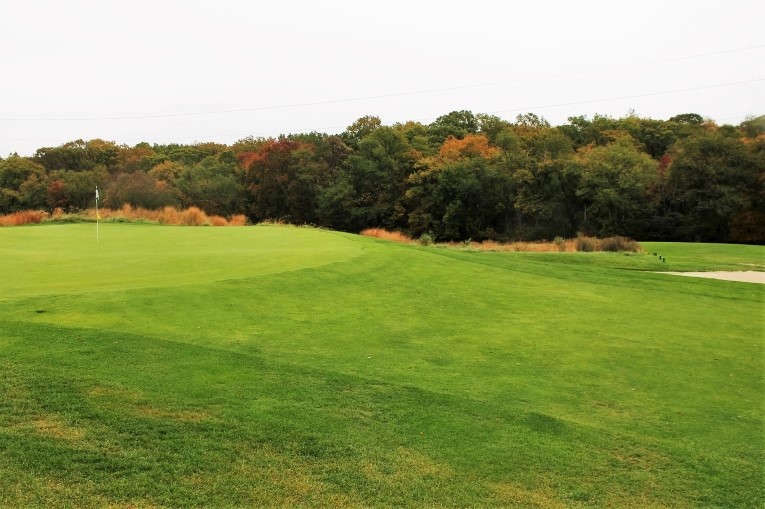
As seen from the left, a customary steep and deep bunker sits at the front right base of the tenth green pad. Banks then sunk the green’s right front quadrant. The thinking golfer can use this graceful ‘C’ contour to shunt his approach shot from the middle of the green toward such front hole locations without directly challenging the penal hazard.
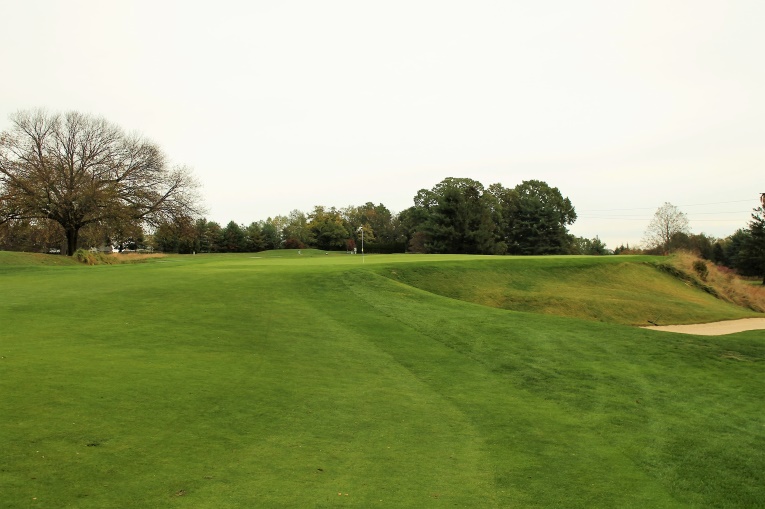
At the eleventh, the fairway seamlessly feeds onto the putting surface. The golfer’s best interest is often served by eschewing the large green and landing his approach just short of the green for such front hole locations.

The massive twelfth green is dominated by a horseshoe imprint, which eats up nearly 40% of the putting surface. All hole locations are a reaction to it. Hitting the incorrect portion of the green for that day’s hole location is an invitation to three putts or worse.
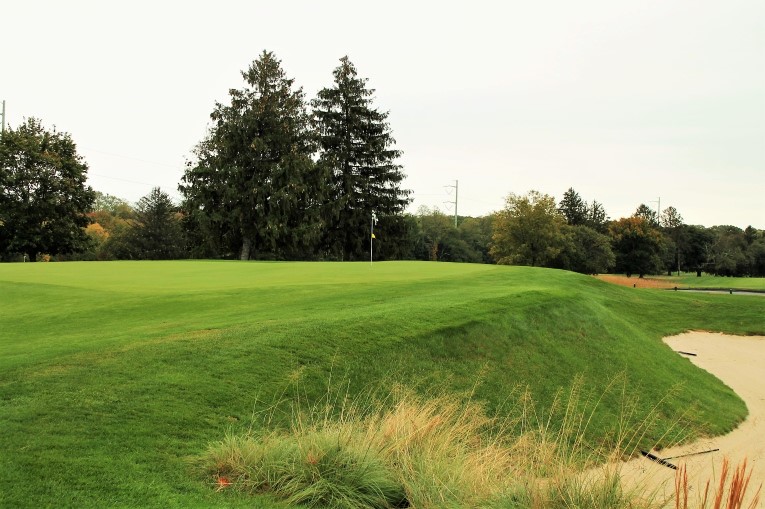
Here is a middle, back right hole location for the 13th. A steep bank long and a two foot diagonal ridge make the effective area of this shelf a mere 20% of the green.
Can the golfer fade his approach and find the lower front right portion of the tenth green as seen above? Can he flatten his trajectory at the eleventh and have his approach tumble onto the putting surface? Can he find the bathtub at the twelfth? Is he talented enough to find the narrow back shelf at the thirteenth? These questions are just as attractive today as when the course opened, so full marks to Banks for creating something that stands the test of time.
Architect Stephen Kay has been the architect on record since 2006 and has been picking away at Forsgate ever since. After ten years of studying Banks’s work, he states admiringly, ‘Banks certainly had ‘chutzpah.’ The boldness and largeness of his features are without parallel. His bunkers are deeper compared to his peers, Ross and Tilly. His greens are bolder. As an example, Ross created great greens at Oyster Harbor with each surface separated into different areas by ridges, rolls, swales. Banks did the same at Forsgate but with a much bigger difference in elevations.’
Banks was essentially offered a rectangular block of land that ran south/north with valleys throughout. By the 1930s, the concept of returning nines had taken hold and four playing corridors (e.g. the first, ninth, tenth and eighteenth holes) needed to be created at the southern end of the property where the clubhouse sits. While the author doesn’t know for sure, he imagines such constraints simplified the routing for an architect as talented as Banks.

Dairy and farmland surrounded Forsgate. Indeed, only flat land is visualized on the approach to the club. Therefore, the pleasure is all the more enhanced when one discovers that …

… the course itself occupies nothing short of ideally rolling land for golf – defined as not so hilly to discourage walking but with enough movement to alter stances and create compelling golf.
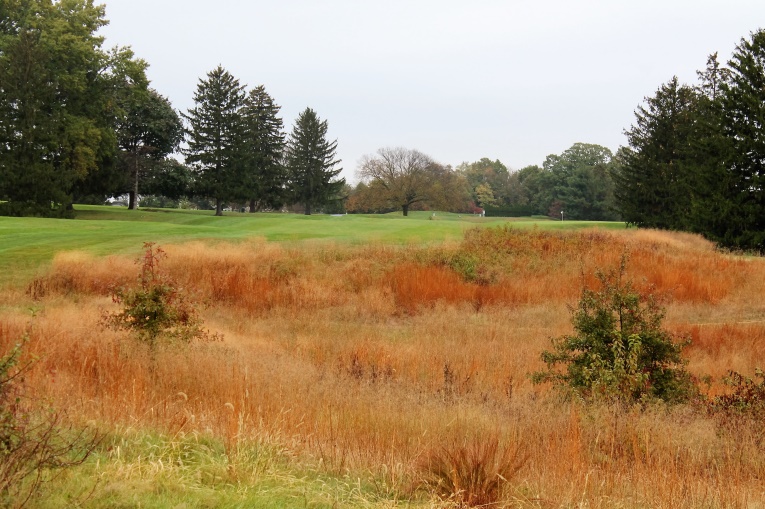
Though Forsgate has evolved from an open expanse to a mature parkland setting, the course doesn’t suffer from being monochromatically green. As viewed from the eleventh tee the native grasses are awash in color.
As is typical for the northeast, the soil is clay-based, not sandy so the opportunity while good was not great. Depending on your point of view, Forsgate is either splendidly located near a highway between Philadelphia and New York or it is a bit remote from both New York and Philadelphia. Banks, himself, once noted that ‘Most skyscrapers are built where they are needed. So are most golf courses.’ No doubt he felt good about this site in such a well-trafficked corridor.
As we see below, what Banks ultimately achieved leaves the golfer with the overriding sensation that no architect could have produced a better design on that piece of property. Forsgate has routinely held exhibitions and charity events and garnered lofty praise from the likes of Ben Hogan and Sam Snead, who called the greens ‘the most eye-poppin’ he had ever seen. In fact, Snead thought that no professional would break 75 if he was allowed to set the hole locations.

As we head to the first tee, we know we are in good company as the likes of Ben Hogan, Arnold Palmer, Lee Trevino and Annika Sorenstam have preceded us.
Holes to Note
Third hole, 215 yards, Eden; The first of Forsgate’s great holes, this Eden features a unique twist: a pronounced spine that divides the wide green into a distinct left and right portions. Trying to two putt from one side to the other is nearly as challenging as trying to putt from the back to front tier of the Biarritz. As Kay puts it with a wry smile, ‘I stand on the tee in awe of its awesomeness.’
Fifth hole, 415 yards, Punchbowl; Immensely appealing, the key word being ‘immense.’ This green was once considered among the biggest in America and measures 14,400 square feet. There are two types of Punchbowls, those that are located uphill (e.g. NGLA, Whippoorwill) and those that are downhill (e.g. The Creek, Fishers Island). A punchbowl situated on flat land would be little more than a basin that couldn’t drain properly so they are virtually non-existent. This is of the former and the tilt of the green sheds rain off the front.

… on getting the approach well into the large green without leaving an unmanageable sliding downhiller.
Seventh hole, 215 yards, Redan; Houses bordering the left side of the course are no more as the course shifts into high gear, fittingly with a reverse Redan. This version features more tilt than any reverse Redan the author has seen. Indeed, the single hardest hole location at Forsgate might well be top left front here. The author has only seen it there once but had plenty of time to witness the havoc it caused with play backed up!

The long time professional at Forsgate Jim Warga enjoyed relating Bob Crowley’s hole in one here. His five iron apparently came to a stop on the high left edge of the green but as the group walked toward the green, the ball oscillated, turned and slowly rolled 40 feet sideways into the hole! The high mound left connotes the back left bunker, one of those places best avoided.
Eighth hole, 605 yards, Long; At the low point of the property, the eighth tee is some 1200 yards from the clubhouse and given that the nines return, this hole is appropriately named! Here and the next hole play across the east shoulder of the property where the land cants from high right to low left. As such, both thoroughly examine the golfer’s ability to hit from slopping lies. Each hole culminates in a plateau green with seemingly bottomless greenside bunkers short left; so, playing high right is advantageous (though the ground’s tilt does nothing but facilitate a pull/draw/hook). Owner Chris Schiavone and Stephen Kay have hopes of restoring the cross hazards that once slashed across this fairway some 250 yards from the green.

This severe green complex pressures one to advance the ball well down the fairway in two shots. With a thirty foot pit short left and …
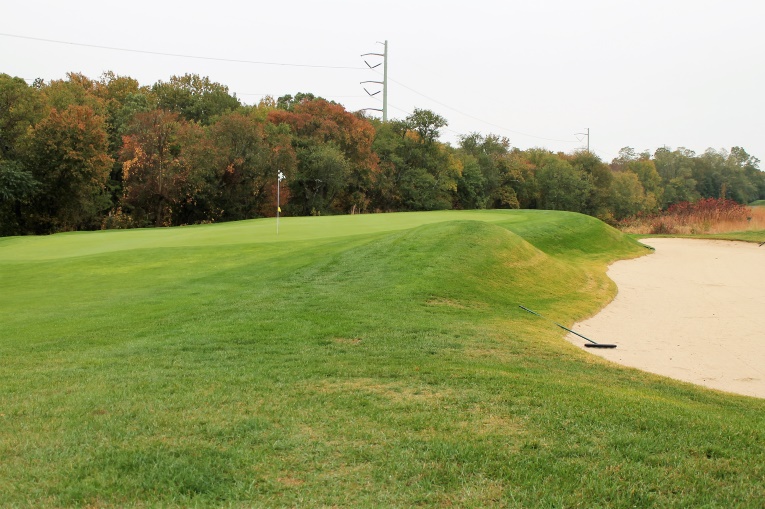
… this strip bunker long right that forces a recovery to a green that runs away, the golfer wants no more than a short iron for his approach.
Ninth hole, 530 yards, Plateau; Though the scorecard suggests a less formidable distance than the prior hole, the second consecutive par 5 plays longer than advertised as most tee balls are deadened into an abrupt hillside that dominates the landing zone from the tee.

Fans of Yale and Mid Ocean will certainly see similarities with the construction of the bunkers at Forsgate, such as this one back right of the ninth green.
Forsgate Country Club
Monroe Township, New Jersey
United States of America
Tenth hole, 415 yards, Valley; Given the rectangular shape of the property, a fair number of straight playing corridors were mandated but this hole exemplifies how life can be brought to such holes. Here, the fairway resembles heaving waves where valleys cross perpendicular to play, both off the tee and on the approach. Where you position your tee ball in the fairway depends on the day’s hole location as well as the importance you place on gaining a level stance.
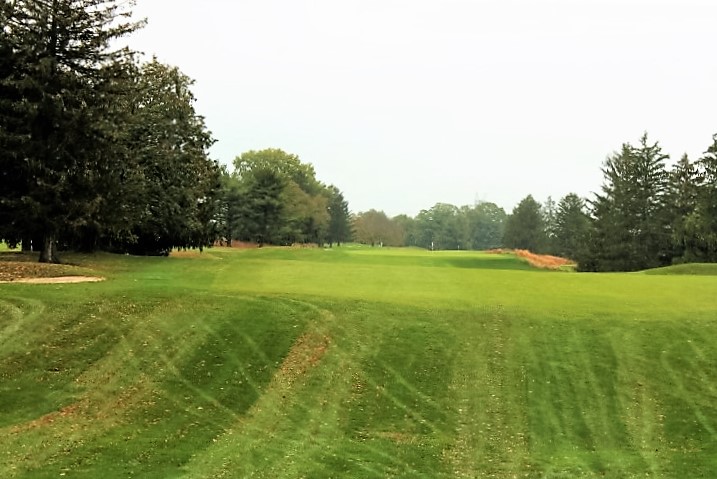
Out in the hitting area, the fairway is a flat shelf that provides level lies until 160 yards to the green. Thereafter, ….
Twelfth hole, 165 yards, Horseshoe; While Short holes typically exhibit large built-up green pads surrounded by (therefore) deep bunkers, that’s not what defines their defenses. The very best Short holes (e.g. the sixth at NGLA, the seventh at Saint Louis Country Club) feature wicked green contours and many include a thumb print or horseshoe indentation. This horseshoe is the most audacious and surely affords a dozen plus interesting hole locations.

A thing of beauty – the Short green complex is the very metric of massive, yet lies peacefully upon the ground. Note how the right bunker is three feet lower than the left. A flag tucked far right is a scary proposition, much more so than …
Fifteenth hole, 330 yards, Chocolate Drop; How nice it is to find a two shotter of modest length late in the round. Many of the great courses – Pine Valley, Rock Creek, Cabot Cliffs, Oakmont, Inverness – feature one but few courses built between 1950 and 1990 are as fortunate. During that period, golf was more about a stern examination than something multi-dimensional and satisfying. Banks’s brazen greens and deep bunkers might suggest that his courses are just for the tiger but the opposite is true: they possess a full range of holes that will appeal to all.
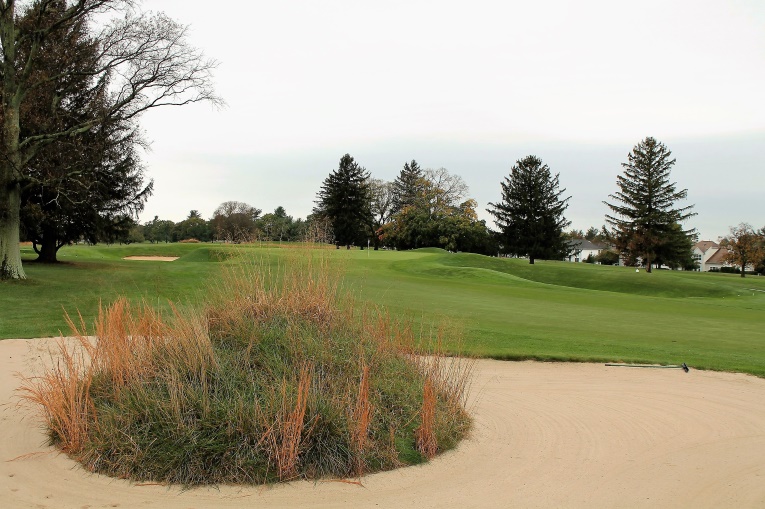
Situated 100 yards from the green, this bunker is at grade with the level fairway. Given the clay soil, digging down wasn’t a prudent option, so this chocolate drop creates hazard.
Sixteenth hole, 445 yards, North Berwick; Schiavone appreciates what he has and wants the course to play as Banks intended. Hence, length has been picked up where possible and one of the best examples occurs here. The sixteenth measured 400 yards when play commenced in 1931 and today it is 445 yards. This is important on two fronts: first, the beautifully devised diagonal fairway bunker is again relevant. Second, the design merits – and fun – of Double Plateau greens are most appreciated with a running shot. If the hole is too short, a short iron aerial approach snuffs out the joy of seeing the ball interact with the ground.

Courtesy of the tee being moved back and left, this diagonal bunker is once again the dominant feature off the tee.
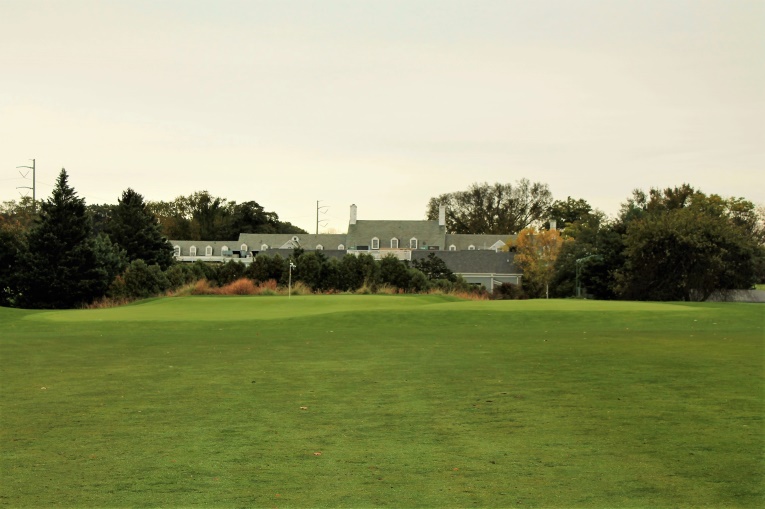
The moniker ‘Steam Shovel’ was one that George Bahto did not approve of as he felt it connotes a lack of artistry. Look at the visuals here to appreciate how Banks finessed bold features that appear tranquil with the general surrounds.
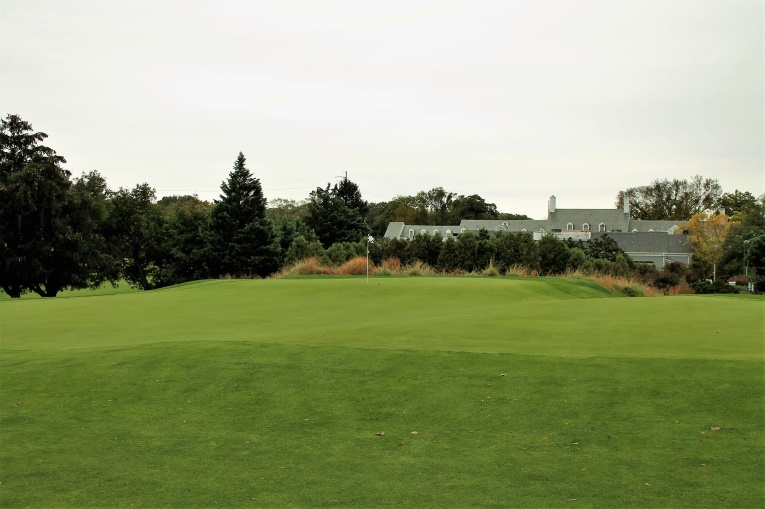
This closer view confirms the high right front shelf, the lower mid section and high back, left shelf. Everything seems to be at grade with the land and yet …

… as seen from the left, the sixteenth green is actually another tall green pad that features a precipitous drop both to the left …
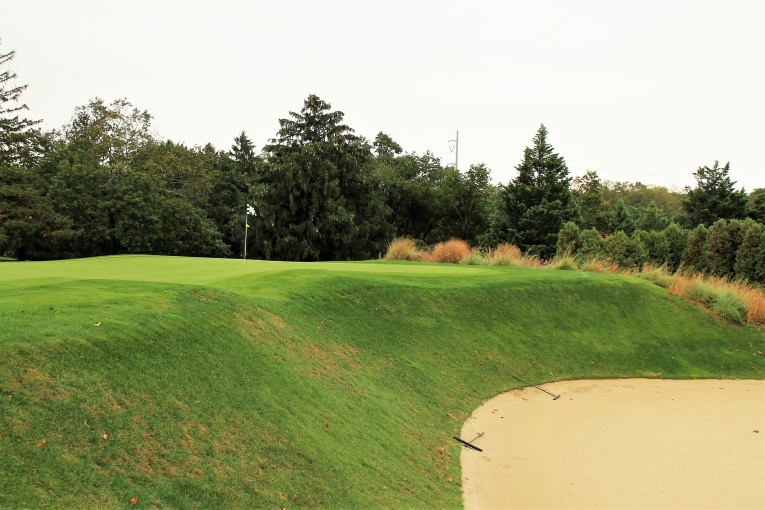
… and right! Go back to the first photograph armed with this knowledge and you realize the approach to a back shelf hole location is anything but straightforward.
Seventeenth hole, 240 yards, Biarritz; Architecture, like most art forms, invites criticism. Mess up a great piece of land and the critics howl! Yet, one way to judge the true meddle of an architect is to see what he conjures up on modest property where nature wasn’t in a helpful mood. Look no further than this hole to appreciate Banks’s artistry. It is audacious, full of great golf, incredibly flexible and a blast to play day-in, day-out. According to Green Keeper Donald Asinski, whose job it is to present these powerful features, ‘The Biarritz is my favorite hole because of its massive green with such severe contouring and my next favorite is the Horseshoe 12th. You just don’t see green contouring like this anywhere else and best yet, it doesn’t feel gimmicky. Rather, it’s straightforward and traditional feeling, just great design. When I walked the course for the first time I was so impressed with the layout that I knew I had to part of preserving such a phenomenal design.’ Asinski’s gut reaction to the two sparkling one shotters on the back is the norm, not the exception. Indeed, for a set of the classic four Macdonald one shotters – Redan, Short, Eden, and Biarritz – the only Macdonald/Raynor/Banks course in the same class as Forsgate’s collection might be Camargo outside of Cincinnati.
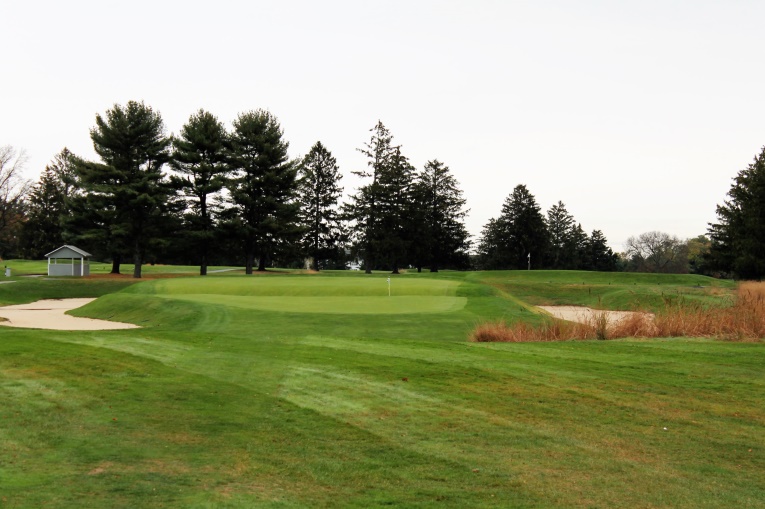
The mighty Biarritz at Forsgate – give Banks credit for creating something so bold and compelling across fairly ordinary land. One of Kay’s first tasks was to restore the front half of this mammoth green in 2009.
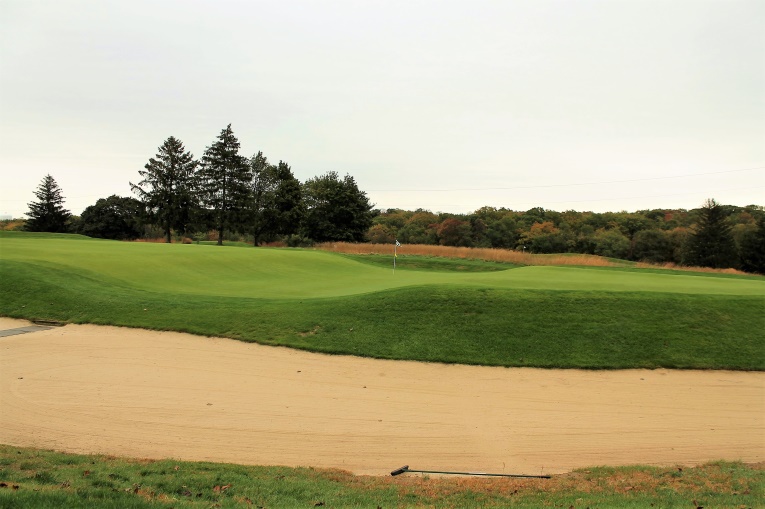
It takes a commitment from the owner and a talented green keeping staff to present this 73 yard long green day-after-day. Asinski mows this green last so two workers can perform the task. Even double-teamed it takes twice the time to mow compared to the other greens.

Looking back toward the distant tee, the sight of the flag in the swale begs applause. How Banks brought such joy to his courses is a subject hugely worthy of study.
Eighteenth hole, 455 yards, Purgatory; This hole parallels the tenth, heading toward the clubhouse and plays similarly, across a valley to the fairway and then over another to the green that rubs against the clubhouse. The clubhouse has been expanded over the years but the core structure was built by Clifford Wendehack, the renowned architect of some of the region’s (and game’s) most noteworthy clubhouses including Ridgewood, Winged Foot, and Mountain Ridge. Today’s structure stands today as testimony to the fact that Forster spared no expense in getting his club and course going.
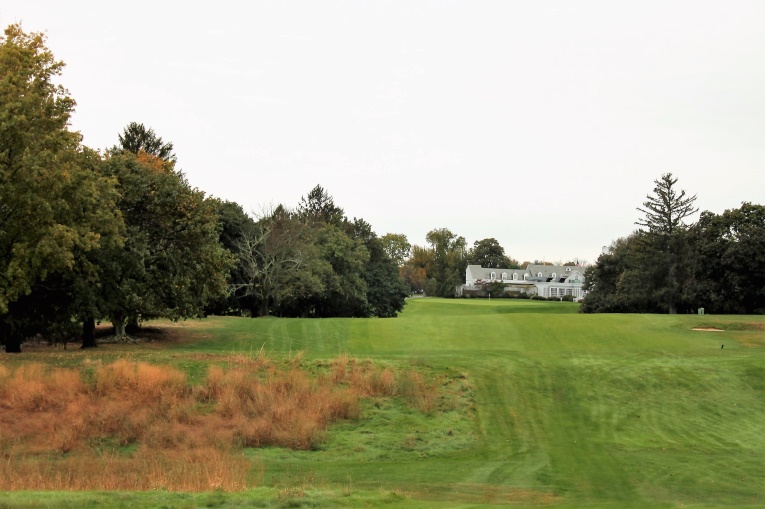
Lush topography carries the golfer home, right up to the famed clubhouse which is a scant nine paces off the back right of the Home green.
Warga sums up the unique experience of playing here when he said it is the only course where a golfer can hit a putt fifty feet, only to have it return to his feet! That reminds the author of a Banks joke that Bahto enjoyed telling. It went something like, ‘How did I just take a 7?’ ‘Easy,’ the playing partner remarked, ‘You were on in 2 and 5 putted!’
You can appreciate the scope of Banks’s bunkers by laying a rake on the grass face of your course’s tallest bunker wall and consider that the typical Forsgate greenside bunker is three rake lengths tall! Yes, the face of such bunkers are labor intensive to maintain but one of the author’s contentions is that the better the hazards, the better the golf and that certainly applies to Forsgate.
George Bahto articulated so well in his book, The Legend of The Knoll, ‘Banks’s architectural philosophy seems very fair. Unlike many of the architects of that day, he did not approve of blind shots and included them only when the topography dictated. His greens always have a slight tilt toward the fairway. The shot values on his courses were balanced and, as much as possible, he tried to have golfers use their entire set of clubs while playing a course he designed. Fairway bunkers were fair, although negotiating their lips required thought in club selection. More than anything else, he was a firm believer in a tee box elevated enough so that the golfer would be able to view the problems of the hole presented before he teed off.’
Playing a Banks design is akin to a chess match with a grand master. What you need to accomplish is laid before you but the price for failure is ‘steep’! Accomplished players relish the opportunity to use their minds and clubs to overcome the heroic challenges before them. When the LPGA held a tournament at Forsgate in the late 1970s, the event was won in successive years by Amy Alcott, Kathy Whitworth and Nancy Lopez. Not too shabby – the three events crowned three Hall-of-Famers!
Raynor’s accomplishments have been properly glamorized in recent times, and without taking anything away from him, the author feels strongly that Banks exhibited a similar talent for routing, engineering, problem-solving and design that Raynor so readily grasped from Macdonald. Banks once commented that Raynor told him, ‘I used to think my ears would grow to be like asses’ ears, for I was always stretching to take in every word that Mr. Macdonald uttered on the subject of golf.’ The three of them formed the bedrock for the Macdonald school which is responsible for some of North America’s landmark designs. To the author, Banks played a more central and vital role among that triumvirate than perhaps he has been here-to-date received credited.

This gorgeous hole diagram occupies a prominent spot inside the Wendehack clubhouse. The sight of so many closely bunched, parallel holes is deceiving. The course actually occupies over 200 acres and as we have just seen, the land and the architecture combine to render compelling golf.
Bahto notes in regards to Banks that ‘The courses that he designed from 1928 and 1931 were undoubtedly his finest. From his earlier works with Seth Raynor to the later works of his own, Banks’s own personality and personal philosophy began to manifest themselves in the courses he designed.’ Even though there is tantalizing golf of a high order throughout central and northern New Jersey, Banks’s architecture at Forsgate has a loud voice that makes a powerful statement of its own. Don’t miss it.
The End




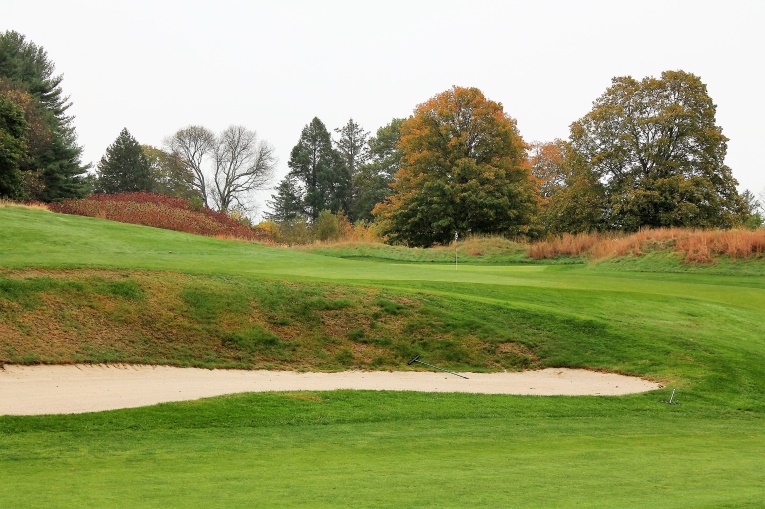
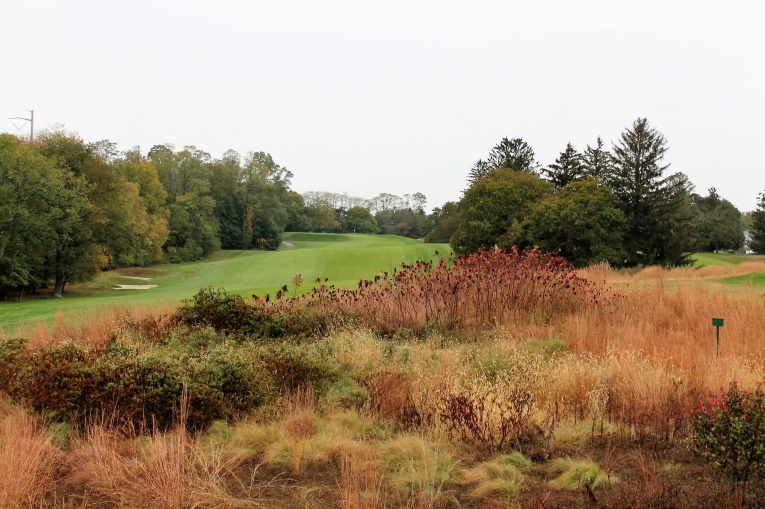
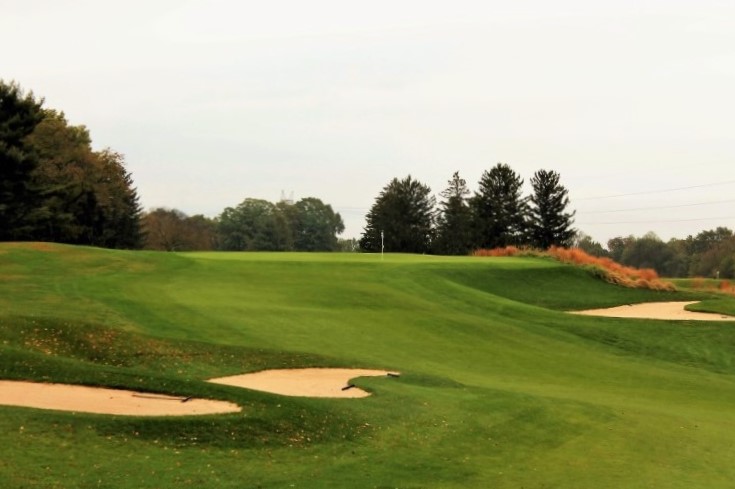
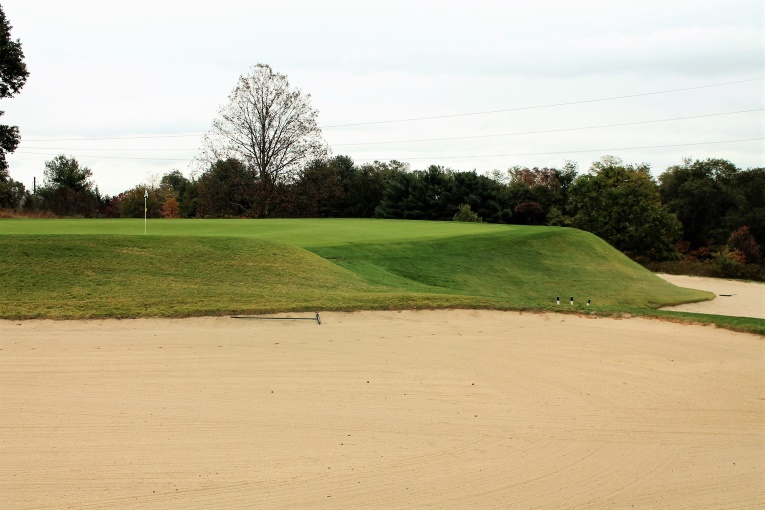



![The Park, West Palm (Lit 9) [2023]](https://golfclubatlas.com/wp-content/uploads/2024/12/IMG_7092-2-scaled-500x383.jpg)


